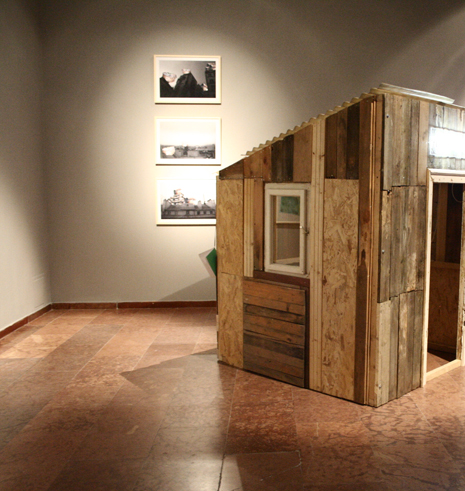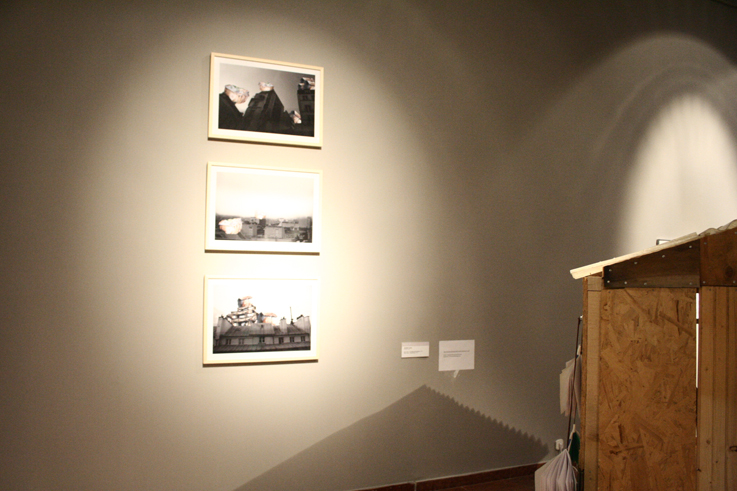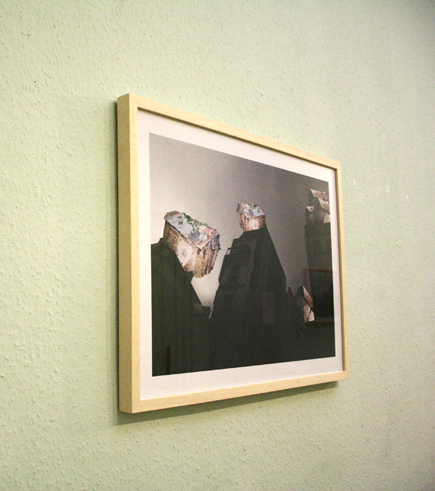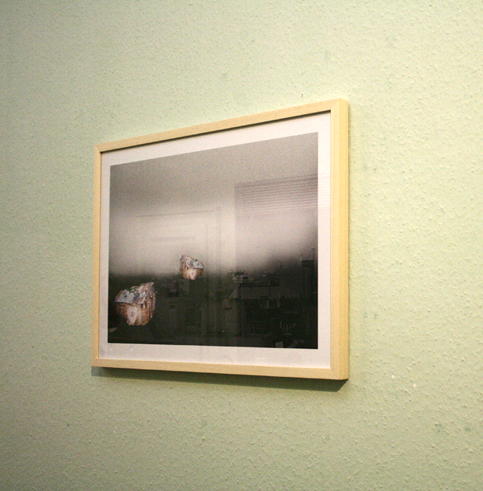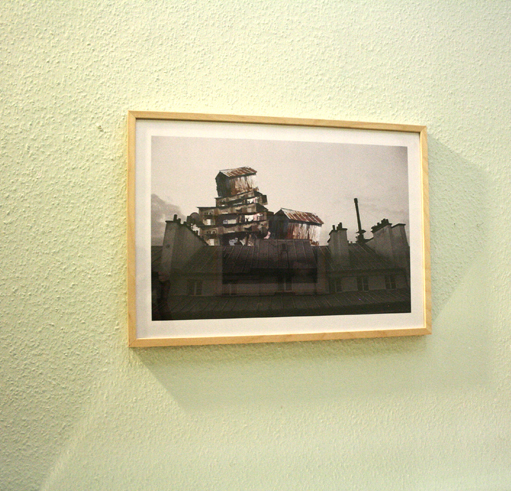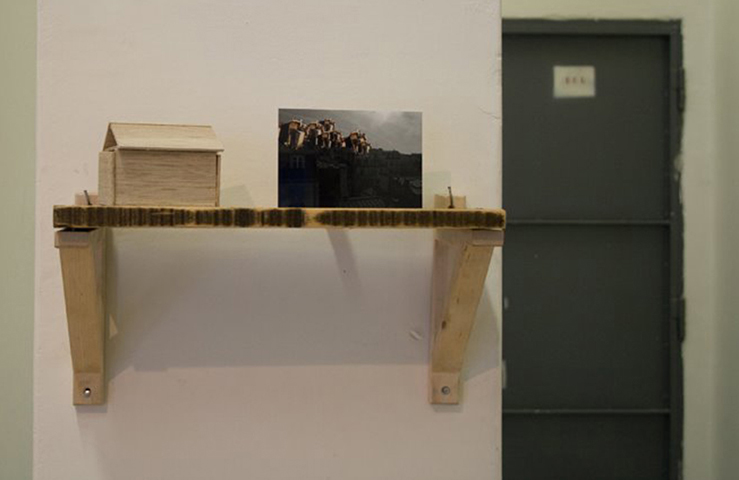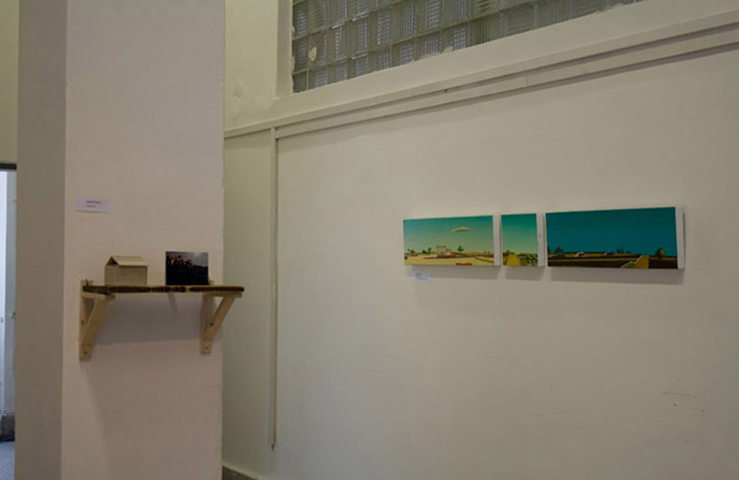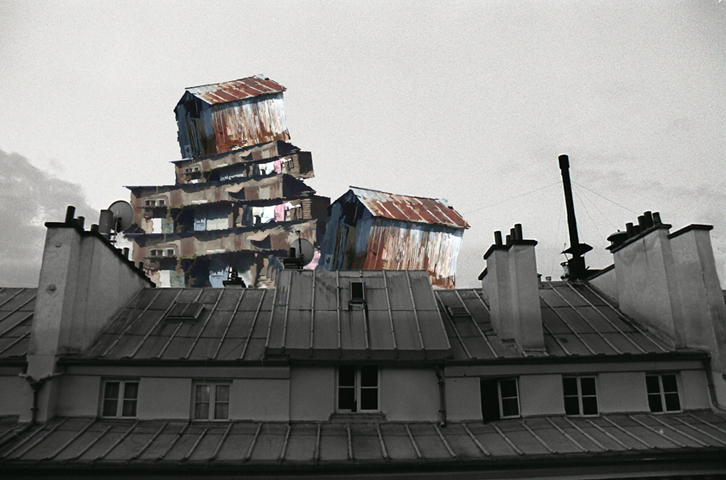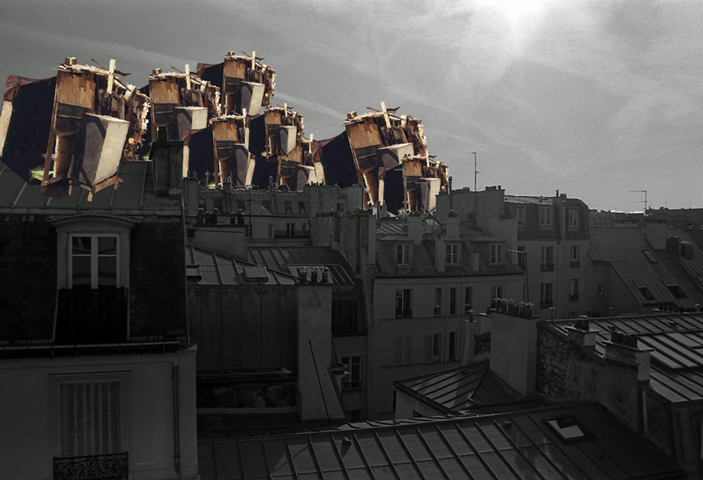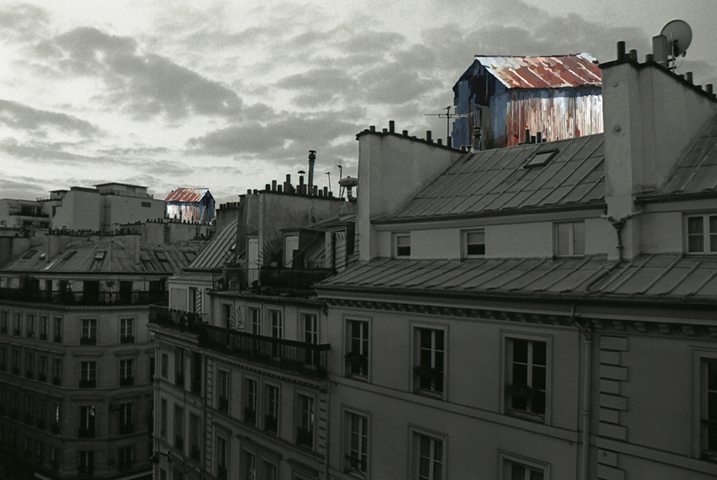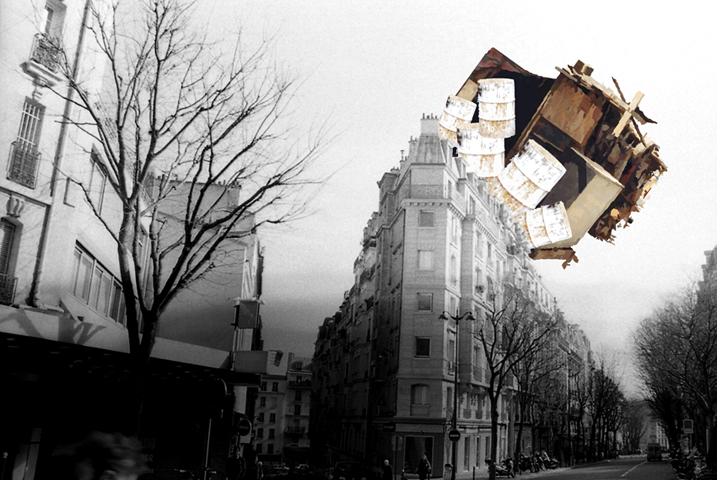On the European city there is a second layer appearing, that is an utopia of the future of Europe. This second layer creates a second city, on top of the other-one, that is separated from it, and has it's own life. The viewer can associate these little huts or favelas with slums of non European or European cities that these cities push out to distant suburbs, far from the center of the city. It is questioning the horizontal evolution of the cities that gather around them more and more suburbs as they grow, and also the vertical evolution of cities with the skyscrapers or the tall buildings of the suburbs, and finds another type of growth, a prolific one.
Az európai nagyváros felett egy második réteg jelenik meg, ez Európa jövöjének utópiája. Ez a második réteg egy második várost hoz létre az azt megelőzőre épülve, de külön él tőle, saját élete van. A néző az európai, és európán kívüli nyomornegyedek képével asszociálhatja a belvárosi épületek tetejére helyezett házakat, amelyeket a városok távoli külvárosok felé tolnak el, távol a belső kerületektől. A képsorozat megkérdőjelezi a városok horizontális evolúcióját, amelynek során egyre több és több külvárost gyűjtenek maguk köré, ahogyan növekszenek. Szintén megkérdőjelezi a városok vertikális fejlődéi irányát, a magasházak , felhőkarcolók épülését a belső kerületekben, és egy más fajta feljődési lehetőség felé mutat, egy organikusabb, borjánzóbb felé.
2009, 2011 photomontages, 50x70, and 9x13 prints, little wooden hut, shelf
